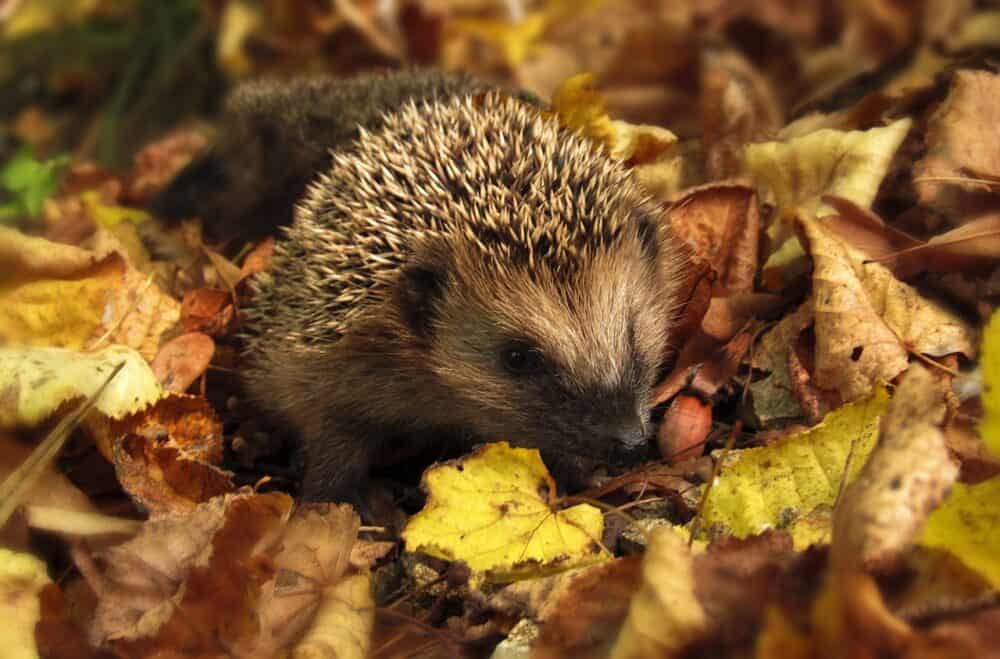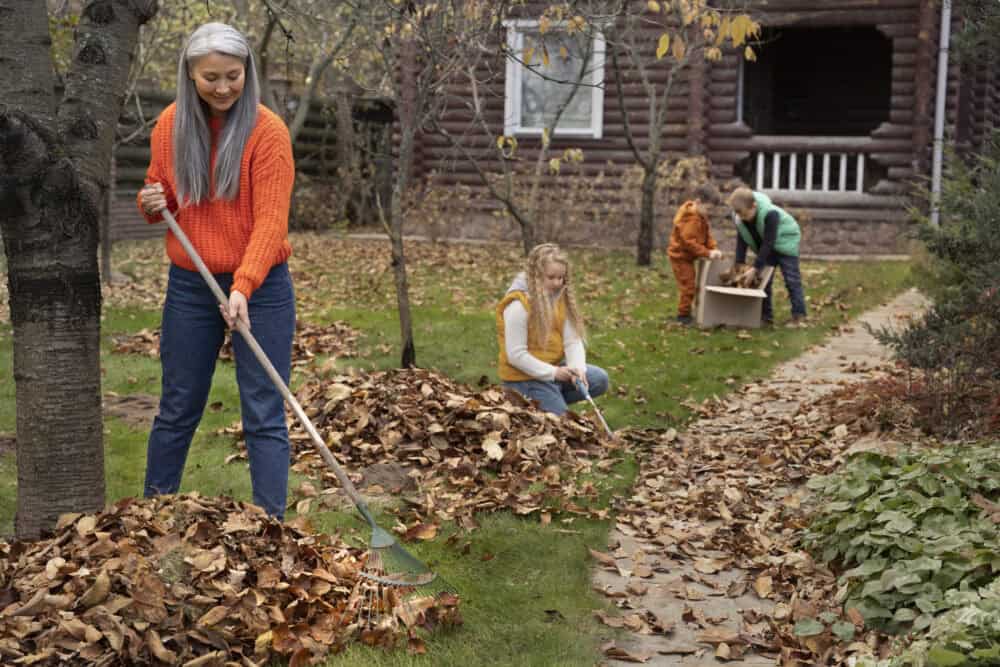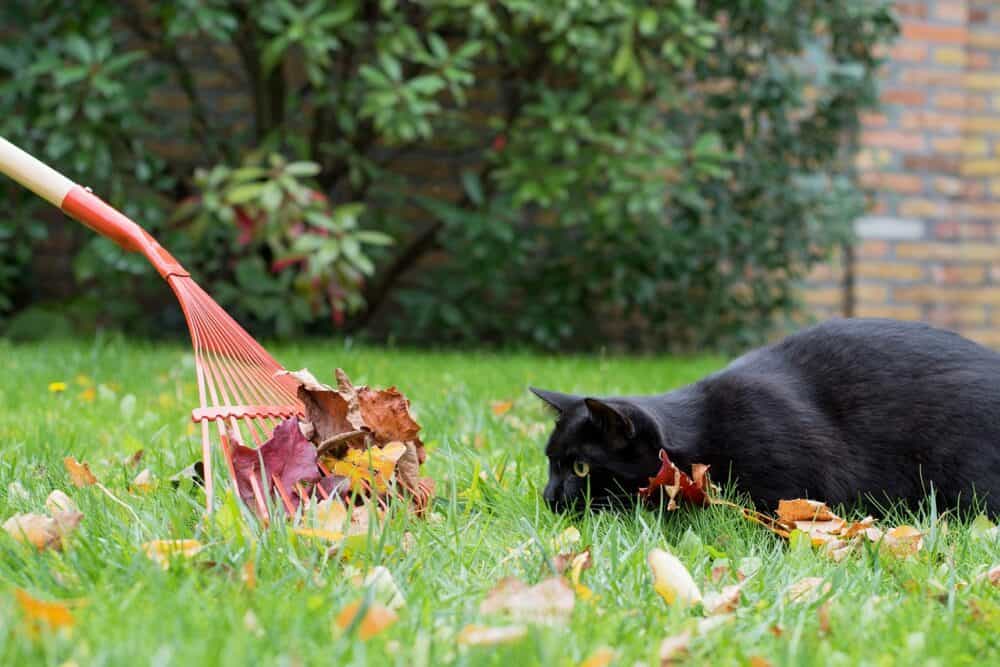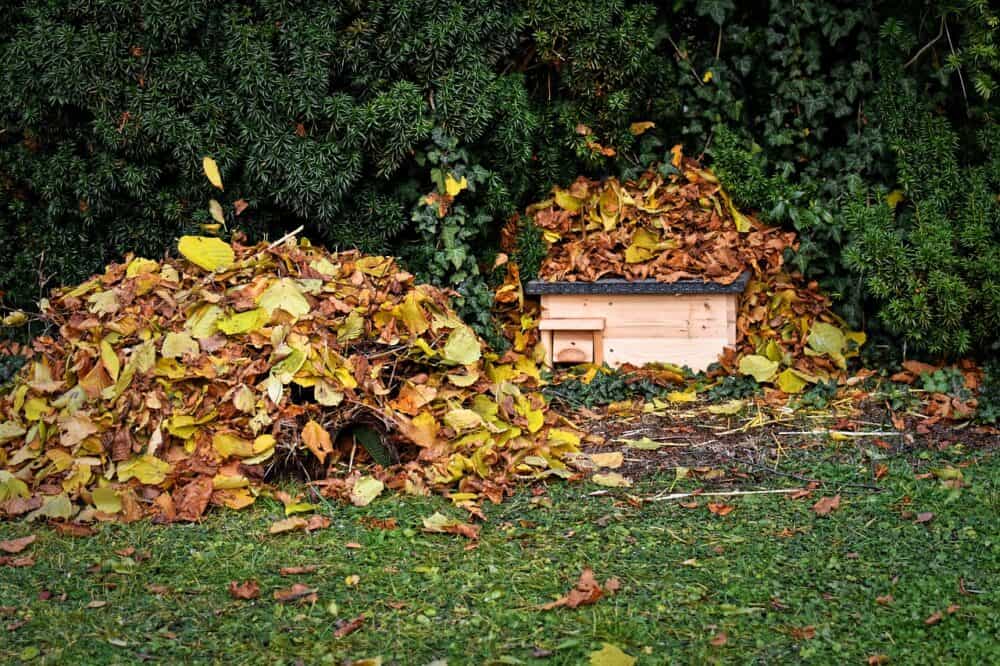
How Best To Control the Autumn Leaves in the Garden
Table of Contents
While the sight is stunning as the Autumn leaves blanket the ground, the resulting piles in your garden can quickly become overwhelming. These fallen leaves are more than just debris—they’re a valuable resource for your garden. Let us explore the best ways to remove and reuse leaves from your garden, turning them into leaf mulch, compost, and more, ensuring your garden thrives throughout the winter months and beyond.
The Best Ways to Remove and Reuse Leaves and Debris

Raking and Removing Leaves the Easy Way
The first step in leaf removal is to gather leaves from areas of your garden where they accumulate, such as garden beds, lawns, and hard surfaces like patios or driveways. A traditional rake or a leaf blower is often the easiest way to remove autumn leaves. A leaf blower will make quick work of large areas, while a garden vac can help with precision clean-up in garden beds or around smaller plants.
Tip: Avoid letting thick layers of leaves accumulate on your lawn, as they can suffocate the healthy lawn beneath and cause drainage issues during rain.
Mulching with Shredded Leaves
One of the best ways to reuse fallen leaves is by turning them into leaf mulch. Shredded leaves break down faster than whole leaves and can be applied as a thin layer over flower gardens, vegetable beds, and around trees to act as a ground cover. Using a mulching mower or leaf shredder is the most efficient way to turn large leaves into smaller pieces. This leaf mulch is a great way to improve soil health, prevent soil erosion, and protect plant roots during the cold months.
Tip: Spread a thin layer of shredded leaves around your vegetable garden to keep the soil warm and moist throughout winter.
Composting Fallen Leaves

Another effective way to utilize leaf litter is by adding it to your compost pile or compost bin. Dead leaves are a rich source of brown materials, which provide carbon—a critical element in the composting process. Combine fallen leaves with green material such as grass clippings, vegetable scraps, and kitchen waste to create a balanced compost that will break down into organic matter.
Over time, these materials will decompose into leaf compost, often referred to as black gold, which is an excellent soil amendment. Adding this to your garden in early spring will improve soil structure, enhance soil moisture retention, and provide essential nutrients for plant growth.
Tip: Shred the leaves before adding them to your compost to speed up the decomposition process.
Creating Leaf Mold for Soil Health
If you’re looking for a natural way to improve soil structure in your garden, consider making leaf mold. Unlike composting, which involves mixing different organic materials, leaf mold is made entirely from fall leaves. Simply pile up the leaves in a corner of your garden, moisten them, and allow them to break down slowly over time.
After about a year, the leaves will have turned into a rich, crumbly material that’s perfect for improving clay soils, sandy soils, and boosting the overall soil health in your garden. Leaf mold also enhances soil moisture retention, which can be a lifesaver for your veg plot during dry periods.
Tip: Use leaf mold as a great soil conditioner for vegetable beds and flower gardens next spring.
Avoiding Drainage Issues and Garden Clutter

While leaves can benefit your garden, they can also cause problems if left unchecked. Make sure to keep drainage pathways and storm drains clear of leaf debris to prevent water buildup and flooding. Additionally, removing leaves from garden paths and lawns ensures that your outdoor space remains tidy and reduces the risk of slippery surfaces during wet weather.
Tip: Use a garden vac to quickly remove leaves from areas prone to clogging, such as near gutters or around drainage pathways.
Composting for Sandy and Clay Soils
If your garden has sandy soils or clay soil, autumn leaves can be especially beneficial. By adding shredded leaves to sandy soil, you increase its ability to retain moisture and nutrients. In clay soil, adding leaf compost improves aeration and prevents compaction, which can hinder plant growth.
Reducing Noise Pollution and Eco-Friendly Practices

For those concerned about noise pollution, particularly from leaf blowers, consider using a mulching mower or manual tools like a rake to manage your leaves. These methods are quieter and contribute to a more eco-friendly approach to fall clean-up.
Using organic material from your garden, such as autumn leaves, reduces reliance on commercial fertilizers and helps sustain a healthier garden ecosystem. Incorporating leaf compost and mulch not only nourishes your plants but also supports native species and promotes the natural process of decomposition.
Conclusion

Autumn leaves don’t have to be just another part of yard waste. Turn your autumn clean-up into an opportunity to improve soil health and prepare your garden for the following spring. From using a mulching mower to making rich leaf compost, the possibilities are endless.



